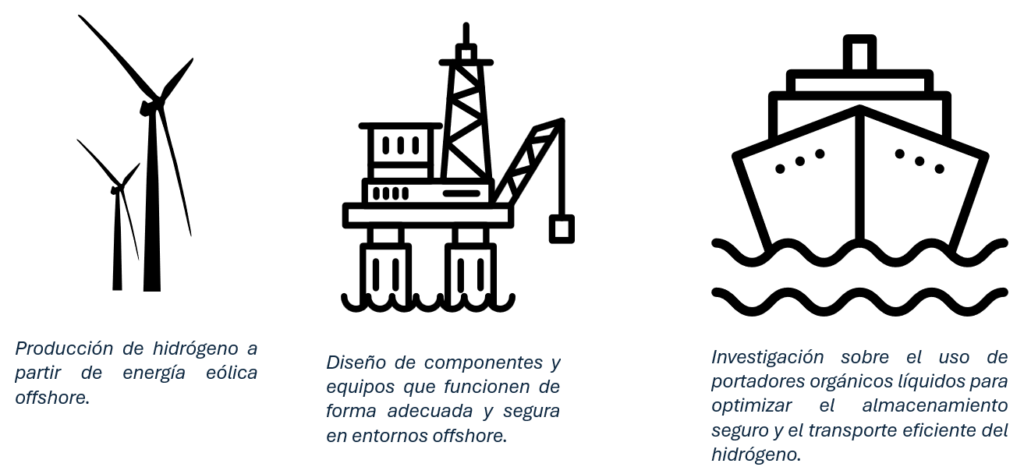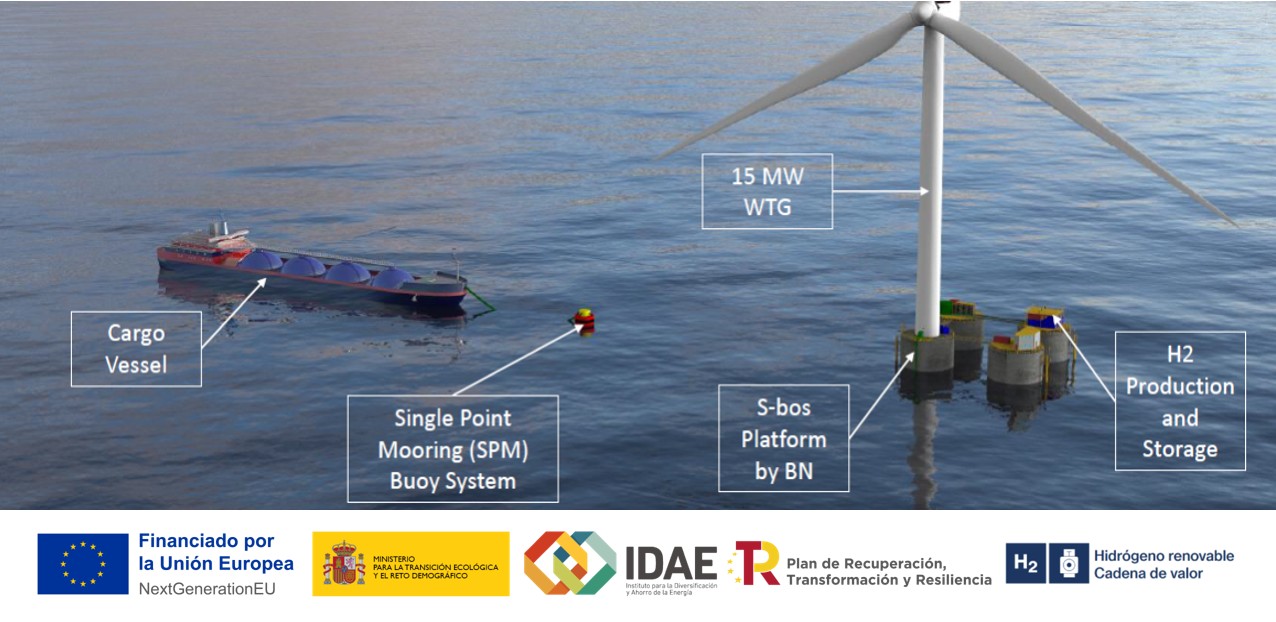The H2FLOAT Project is an industrial research initiative aimed at demonstrating the feasibility of efficiently producing and storing hydrogen on offshore wind platforms. The project focuses on the development of key components that enable hydrogen generation using solid oxide electrolysis (SOEL) technology and its subsequent storage and transport via liquid organic hydrogen carriers.
H2float is a fully integrated solution for the generation, storage, and transport of renewable hydrogen from offshore to points of consumption.

Illustration 1. Process diagram.
H2float is the result of the shared vision of four innovative companies: ATLANTHY, HIDRITEC WATER SYSTEMS, KERIONICS, and BLUENEWABLES, all of which are clearly committed to helping mitigate global warming, prevent the increasing occurrence of catastrophic natural events, address rising sea levels and biodiversity risks, and ensure that the planet’s global temperature does not rise more than 1.5 ºC above pre-industrial levels.
The project aims to highlight the role of hydrogen as a means of storing and transporting energy over long distances, enabling the integration of wind resources—particularly those in remote locations—into energy systems. Meeting climate targets and achieving carbon neutrality by 2050 will require the installation of more than 3,000 GW of electrolysers, compared to a negligible amount today. These electrolysers will need TWhs of energy year after year, adding to the already growing electricity demand. However, the energy needed to power the electrolysers must not compete with electricity for other electrifiable uses or overload existing electrical grids, meaning all hydrogen production projects will need to have dedicated renewable energy plants capable of meeting their energy requirements.
Offshore wind energy and its link to hydrogen have begun to receive greater attention in recent years. The reason is simple: the best wind resources are found in ocean areas far from civilisation, making the installation of power transmission lines to harness that energy completely unfeasible. However, with hydrogen, this becomes possible, as it can be stored and transported. Still, the idea of placing a hydrogen production and conditioning system on offshore wind platforms remains a very immature concept and presents significant challenges, such as the need for large storage volumes, the low efficiency of the most mature electrolysis systems (resulting in energy losses that impact the system’s economics and efficiency), and the high costs of compressing and liquefying hydrogen or converting it into ammonia for transport. H2FLOAT will demonstrate an alternative through a hydrogen production, storage, and transport model that offers very high efficiency, large storage capacity, and ease of transport to wherever hydrogen is needed.

To make this project a reality, funding has been requested under the Incentive Programme for the Innovative and Knowledge-Based Hydrogen Value Chain (Programa de Incentivos a la Cadena de Valor Innovadora y de Conocimiento del Hidrógeno Renovable, in Spanish), part of the Recovery, Transformation and Resilience Plan. This initiative, financed through the NextGenerationEU funds and managed by the Institute for Energy Diversification and Saving (IDAE, Instituto para la Diversificación y Ahorro de la Energía, in Spanish), provides crucial support for the development of strategic technologies in the hydrogen sector.
The total grant awarded to the project amounts to €2,913,404.14, enabling progress in innovative solutions for the production, storage, and transport of renewable hydrogen in offshore environments.
